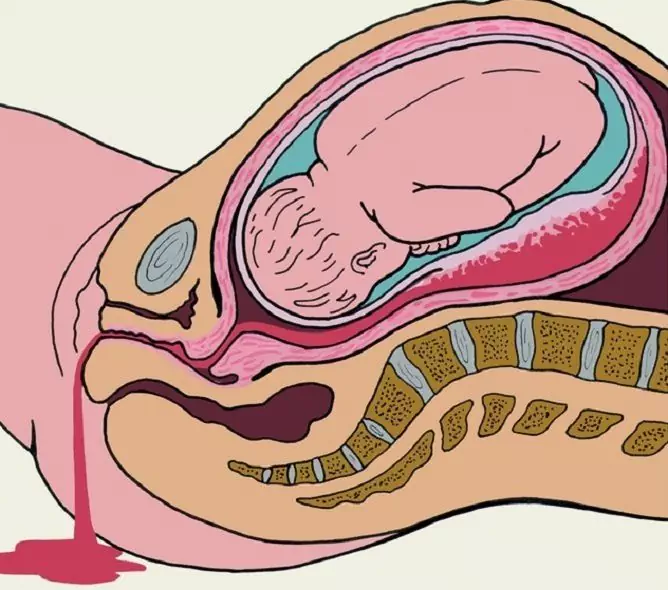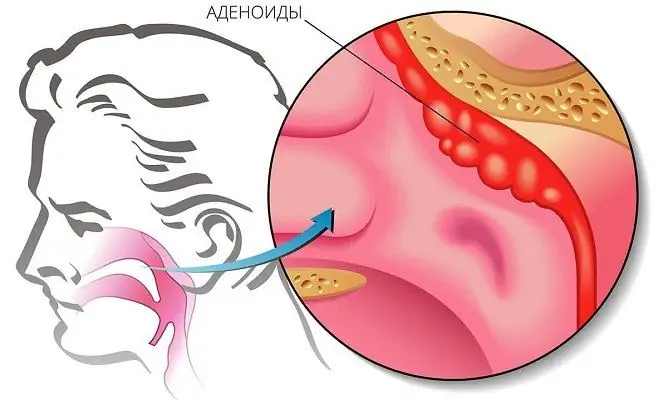- Author Rachel Wainwright [email protected].
- Public 2023-12-15 07:39.
- Last modified 2025-11-02 20:14.
Coccygodynia
The content of the article:
- Causes and risk factors
- Forms of the disease
- Symptoms of coccygodynia
- Diagnostics
- Coccygodynia treatment
- Possible complications and consequences
- Forecast
- Prevention
Coccygodynia - painful sensations in the coccyx of a persistent nature, caused by inflammation or damage to the branches of the coccygeal nerves.

The tailbone is the lower spine, consisting of 4-5 fused rudimentary vertebrae. A part of the muscle bundles of the gluteus maximus muscle is attached to the tailbone, as well as muscles and ligaments that take part in the functioning of the distal colon and organs of the genitourinary system (coccygeal, pubococcygeal, iliococcygeal muscles, anal-coccygeal ligament). Flexion and extension are possible in the coccyx, the range of motion is measured in degrees. Coccygodynia is one of the most common coccyx pathologies, accounting for approximately 1% of all medical requests for back pain. In women, coccygodynia is diagnosed three times more often than in men.
Causes and risk factors
It is not always possible to establish the exact cause of coccygodynia.
Among the main causes, there is a tailbone injury with damage to the nerves in the coccyx-sacral region, received recently or long before the appearance of clinical signs of pathology (usually about six months). Most often, such injuries are a blow to the coccyx with a hard object, a fall from a height onto the buttocks.
Injury to the nerve endings of the coccyx in women can occur during childbirth. In addition, coccygodynia can be caused by a coccyx cyst, as well as a weakening of the musculo-ligamentous apparatus of the perineum (more often observed in elderly people), as a result of which the internal organs descend and press on the coccyx.
Risk factors include:
- changes in the configuration of the pelvis during pregnancy;
- frequent constipation;
- prolonged sitting on a hard surface with an emphasis on the tailbone (especially with legs pulled up to the stomach);
- the habit of sitting in the toilet for a long time;
- passive lifestyle (especially sedentary work);
- spasm of the pelvic floor muscles;
- stressful situations and excessive physical activity;
- neoplasms in the coccyx area.
Forms of the disease
Depending on the etiological factor, coccygodynia is divided into traumatic, non-traumatic and idiopathic (when the cause of the development of the pathological process remains unknown).
In addition to the true one, false coccygodynia (or pseudococcygodynia) is distinguished, in which pain in the tailbone occurs against the background of urological, gynecological or proctological diseases. In addition, coccygodynia can be primary or secondary.
Symptoms of coccygodynia
The main symptoms of coccygodynia include pain in the coccyx region during prolonged sitting (especially when sitting on a hard surface), which are aggravated when the patient stands up. Pain sensations can also arise or intensify during bowel movements, intercourse, during menstruation, physical exertion, pressure on the tailbone, while there is no connection with weather changes, diseases of the genitourinary system. The pain can radiate to the groin, lower abdomen, buttocks. It intensifies over time, causing sleep disturbances and a decrease in the overall quality of life.
With coccygodynia, which has developed due to trauma to the coccyx, pain can suddenly arise and stop, increase and decrease depending on the position of the body.
In addition to pain, patients complain of numbness in the lower back, spasm of the muscles of the perineum, stiffness of the lower extremities, change in gait due to aggravated pain sensations with certain movements (slow, somewhat waddling, so-called duck gait). Coccygodynia is often accompanied by mood swings, depressive conditions.
Diagnostics
For the diagnosis of coccygodynia, it may be sufficient to collect complaints and anamnesis (special attention is paid to the patient's lifestyle and possible injuries of the tailbone), as well as an objective examination. On palpation, severe pain occurs in the tailbone region.
A detailed diagnosis for coccygodynia is usually carried out to exclude any other pathologies that can cause similar symptoms. Depending on the indications, it includes:
- digital rectal examination - the presence or absence of signs of an inflammatory process, cicatricial changes, injuries of the sacrococcygeal junction and coccyx, spasm of the pelvic floor muscles or the anal canal is determined;
- bimanual examination of the vagina and rectum in women;
- ultrasound examination of the abdominal organs;
- colonoscopy - to exclude bowel pathologies;
- computed or magnetic resonance imaging, X-ray diagnostics - make it possible to assess the condition of the coccyx and sacrum, hip joints, pelvic bones, detect post-traumatic changes in the coccyx, areas of osteoporosis, etc.;
- X-ray examination of the spine with functional tests;
- sigmoidoscopy and anoscopy make it possible to assess the condition of the rectal mucosa, make it possible to detect internal hemorrhoids, inflamed anal papillae and rectal polyps;
- electrophysiological study of the obturator apparatus of the rectum and pelvic floor muscles - in order to identify muscle spasm.
From laboratory research methods, the following are used: general blood and urine analysis, biochemical blood test, coprogram, bacteriological examination of feces, fecal occult blood test. If necessary, a laboratory examination of a vaginal smear in women and prostate secretion in men is carried out.
In some cases, patients with coccygodynia need consultation with a neurologist or psychotherapist.
Differential diagnosis is required with a fissure of the anus, hemorrhoids, neoplasms of the small pelvis, prostatitis, urethritis, adnexitis, endometritis, papillitis, radiculitis, spondylitis, sciatica.
Coccygodynia treatment
In the treatment of coccygodynia, first of all, it is required to eliminate the adverse effects of the factor that caused its development.
Drug therapy for coccygodynia is aimed at reducing the severity of pain. For this purpose, the appointment of non-steroidal anti-inflammatory drugs, muscle relaxants is shown. In the presence of neurological or mental disorders, sedatives, antidepressants and tranquilizers are used, and psychotherapy may also be required. For pain of psychogenic origin, a positive effect of placebo is noted.
When sitting, use the padded seat pads in the form of a circle.

Source: storage.darakchi.uz
Methods of physiotherapy are effective: ultrasound, ultra-high-frequency, laser therapy, rectal darsonvalization, diadynamic currents, as well as paraffin applications, therapeutic mud. In some cases, the effect on biologically active points is applied (acupuncture, acupressure).
Surgery can be planned only if the etiological factor is accurately determined and other pathologies are excluded. Surgical treatment is indicated when conservative therapy is ineffective or in patients with pathological mobility of the tailbone after fractures or dislocations. Fixation of the apex of the coccyx to the sacral bone or resection of the apex of the coccyx is carried out only when it is partially or completely detached. Otherwise, surgical treatment may worsen the patient's condition.
During treatment, partial immobilization is indicated, in the period of acute pain - bed rest.
Possible complications and consequences
Against the background of coccygodynia, mood swings often occur, with pain lasting several months - depressive conditions, dysfunction of the pelvic organs, constipation, priapism (prolonged painful erection).
Forecast
With a timely, thorough examination and adequate therapy, the prognosis is favorable in most cases. With serious damage to the bones of the spine, the prognosis worsens.
Prevention
In order to prevent the development of coccygodynia, it is recommended:
- be careful to avoid spinal injuries, and if they occur, promptly seek medical help;
- give up excessive physical exertion, especially on the spine;
- lead an active lifestyle, with sedentary work, compensate for it with regular exercise;
- use soft and springy chairs for sedentary work;
- avoid stressful situations;
- choose shoes with stable soles, especially winter ones.
YouTube video related to the article:

Anna Aksenova Medical journalist About the author
Education: 2004-2007 "First Kiev Medical College" specialty "Laboratory Diagnostics".
The information is generalized and provided for informational purposes only. At the first sign of illness, see your doctor. Self-medication is hazardous to health!






